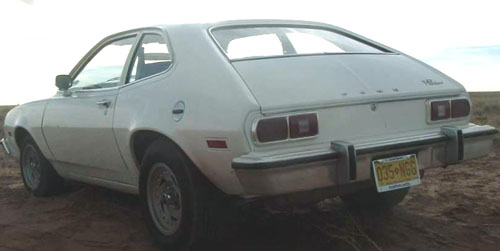Polka dot vs. crisp black PR
April 28th, 2009 | Comments Off on Polka dot vs. crisp black PR
I dressed fairly conservatively up until the 7th or 8th grade, when I saw a picture of John Lennon in a polka-dot shirt.
It was late summer and I wanted that shirt to start the school year, along with a boldly printed paisley and a striped number with white collar and cuffs.
One-hit wonder
I didn’t think about the shirts going rapidly out of style. I just wanted to make a splash. I don’t remember if I did or not, but I do remember that about a month into the school year I was embarrassed to wear the shirts. My mother told me that the appeal of the shirts was going to be shortlived, but she let me buy them anyway. Fortunately, she wasn’t an “I told you so” Mom and allowed me to get new shirts for Christmas.
I thought of this as I read an interview with Dan Nunan on the Business of Software blog. Dan’s company, Scene Systems, produced the animation of the U.S. Air Hudson River landing. The animation had an audience of nearly 2 million on YouTube and was featured on network television and in national newspapers.
Dan was happy to get this exposure, but it wasn’t his initial goal: He just wanted to do something to make a low-cost impact at a trade show. He did everything right in feeding the momentum of the story, but it wasn’t a source of pride. Here’s what he said about it in an email to me:
“I admit to being slightly uncomfortable about the whole thing — partly because it was unplanned, and I’m not really convinced that it brings in much of the right kind of attention.”
Big splash vs. sustainable
Dan is even more suspicious than me of what he calls the “big-splash school of PR.” Like the polka-dot shirt, this type of PR might cause an initial stir, but it’s not likely to have legs, especially when dealing with a specialized B2B audience (in Dan’s case, lawyers).
There are many clients and companies out there that want the big splash — for them, that’s what PR is all about. If you are a PR or marketing person in a B2B market, you have to explain that the real rewards are elsewhere.
What is much more likely to succeed is a sustained program in community building; a program that could include articles and forum participation on popular web sites, positive blog postings from prominent people in the field, strong word of mouth from influencers, and perhaps an intensely read permission-based e-newsletter that your target audience welcomes and finds valuable. This type of program doesn’t have to be bland or conservative, but it should be something that gains momentum over the long haul.
The community-building approach is decidedly unsexy and probably won’t get you on the cover of any PR or marketing journal. But, that slow-building approach — the equivalent of a crisp black shirt that never goes out of style — will deliver the one precious commodity that we all seek: long-lasting, measurable results with the people you really want to engage.


